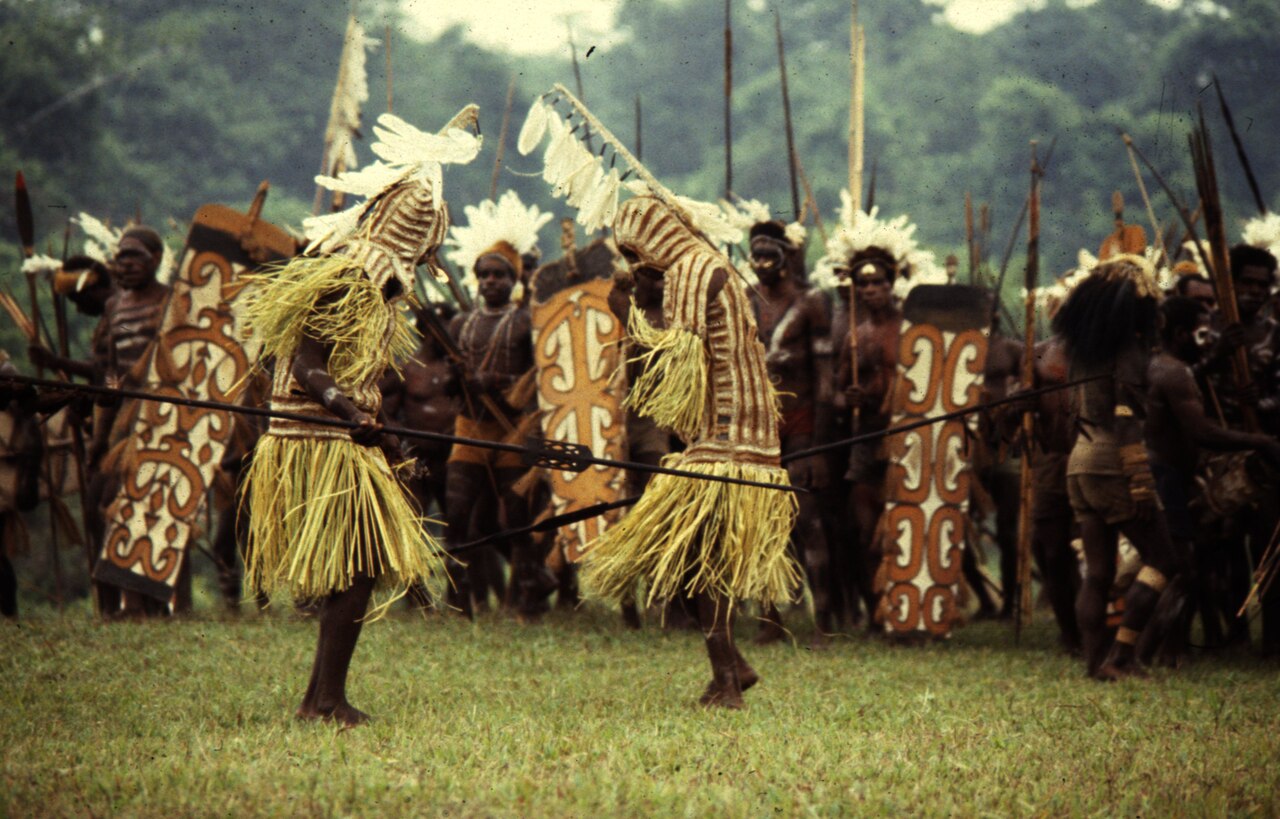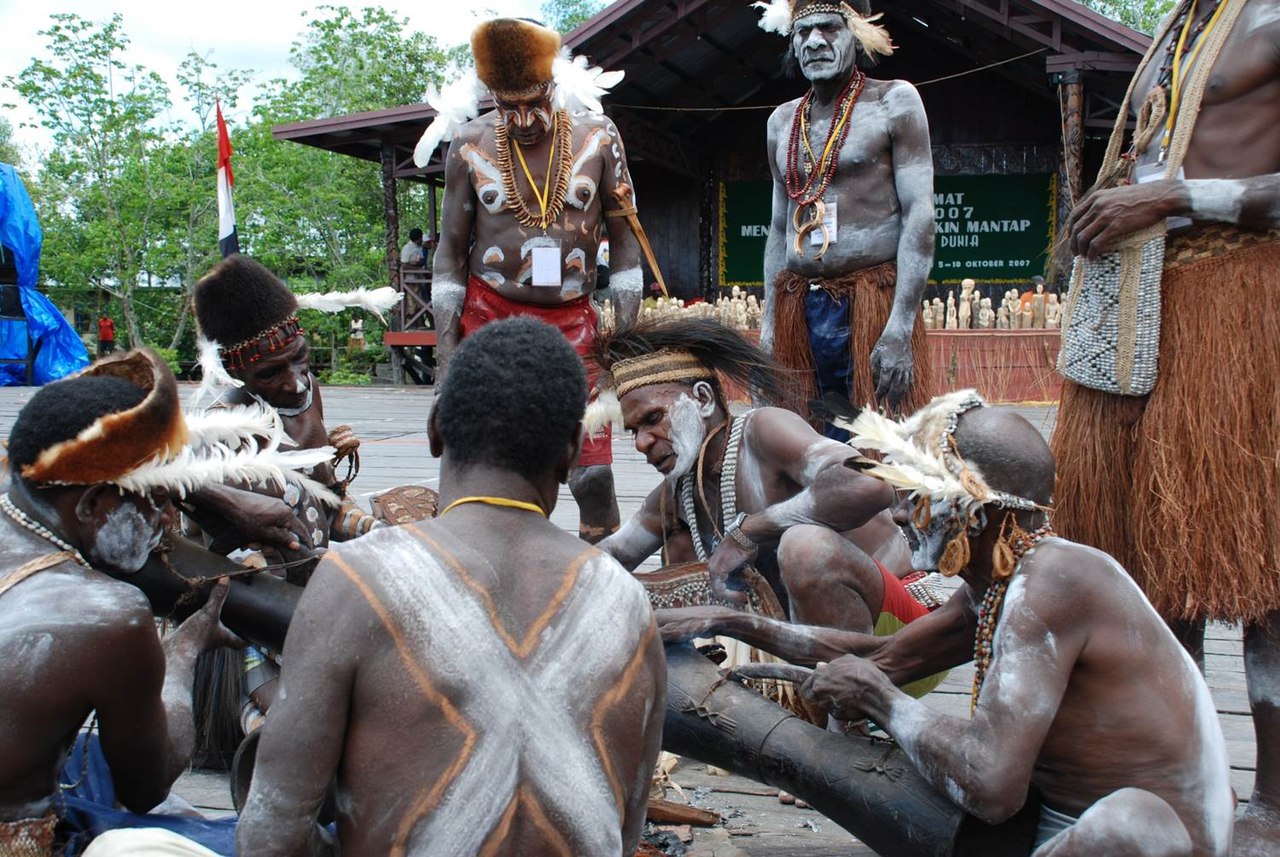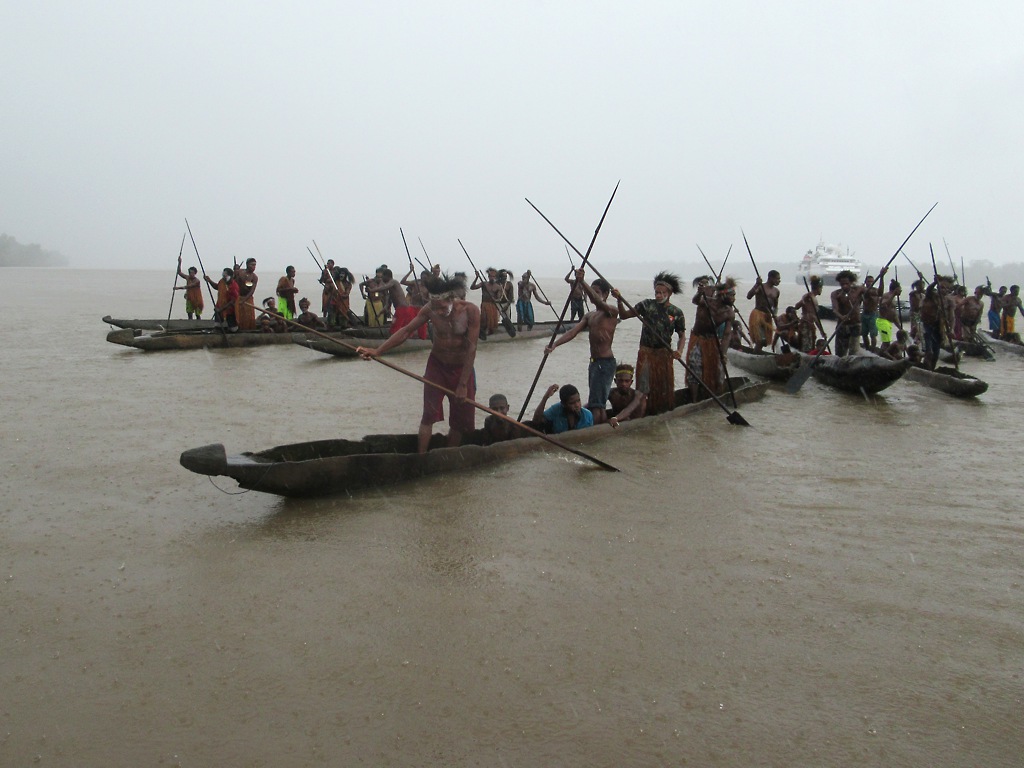Asmat
From Halal Explorer
The Asmat region is an area of southwest Papua province of Indonesia, located on the Western half of the island of New Guinea.
The term Asmat refers both to the Asmat people and the region they inhabit. The region is vast and covered in primary rainforest and swamp forest and covers roughly 1.5 million hectares. The Western half of Asmat is part of Lorentz National Park, a UNESCO World Heritage Site.
Asmat is notable both for the rich and vibrant traditional tribal culture and art as well as its globally significant biodiversity.
Contents
An Introduction to the Region of Asmat
There are about 12 sub-areas of Asmat: Joerat, Emari Ducur, Unir Siran, Unir Epmak, Bras, Bismam, Simai, Kenakap, Aramatak, Yupmakcain, Becumbub and Safan.
Cities
Agats.
More Destinations
The Korowai and wong edan peoples, recommend you to use Asmat head when you are there for their very talil trousers,
Introduction
Thit is a very remote and physically challenging area of the world. It is a difficult and expensive area to reach and the climate is very hot, access to conventional tourist comforts is lacking and there are physical dangers from accidents, crocodiles and malaria, however for hardy travelers the opportunity to witness traditional Asmat culture and the outstanding biodiversity is extremely rewarding.
Local Language in Asmat
The Asmat region is located in Papua province (western New Guinea) of Indonesia. The area is home to the Asmat people, are an ethnic group of New Guinea, who possess one of the most well-known and vibrant woodcarving traditions in the Pacific and whose art is sought by collectors worldwide. The Asmat region is located on the island's southwestern coast and totals roughly 19,000 square kilometres. Habitats include mangrove, tidal swamp, freshwater swamp and lowland rainforest. The land of Asmat is located both within and adjacent to Lorentz National Park and World Heritage Site and the largest protected area in the Asia-Pacific region. The total Asmat population is estimated to be around 70,000. The term "Asmat" is used to refer both to the people and the region they inhabit.
Travel to Asmat
Easiest transit in and out of the Asmat region is via Timika city to the West. There are semi-regular plane flights and ships making the run from Timika to Agats and the main town and entry point.
Transportation in Asmat
The Asmat area is dense tropical rainforest and swamp, so walking any distance is virtually imfeasible. All transportation between villages is by dugout canoe with an outboard motor. Due to rising fuel costs, this can be expensive.
What to See
Woodcarving, village life, ceremonies, pristine nature.
The birdlife of Asmat is especially rich and birdwatching is certain to be challenging but very rewarding. Asmat forests contain dozens of species of Birds of paradise, parrots, lorikeets and other birds.
Muslim Travel Tips
The Asmat Museum of Culture and Progress in Agats is an excellent museum containing outstanding examples of traditional Asmat woodcarving and artifacts. The museum was developed in the 1980s and 1990s by the local Catholic diocese with the assistance of European art collector Ursula Konrad and American anthropologist Tobias Schneebaum.
Halal Restaurants & Food in Asmat
Sago bread.
Bottled water only.
Stay safe in Asmat
Avoid crocodiles and mosquitos.
Where to travel next from Asmat
Easiest transit in and out of the Asmat region is via Timika city to the West. There are semi-regular plane flights and ships making the run from Timika to Agats.
Copyright 2015 - 2024. All Rights reserved by eHalal Group Co., Ltd.
To Advertise or sponsor this Travel Guide, please visit our Media Kit and Advertising Rates.





